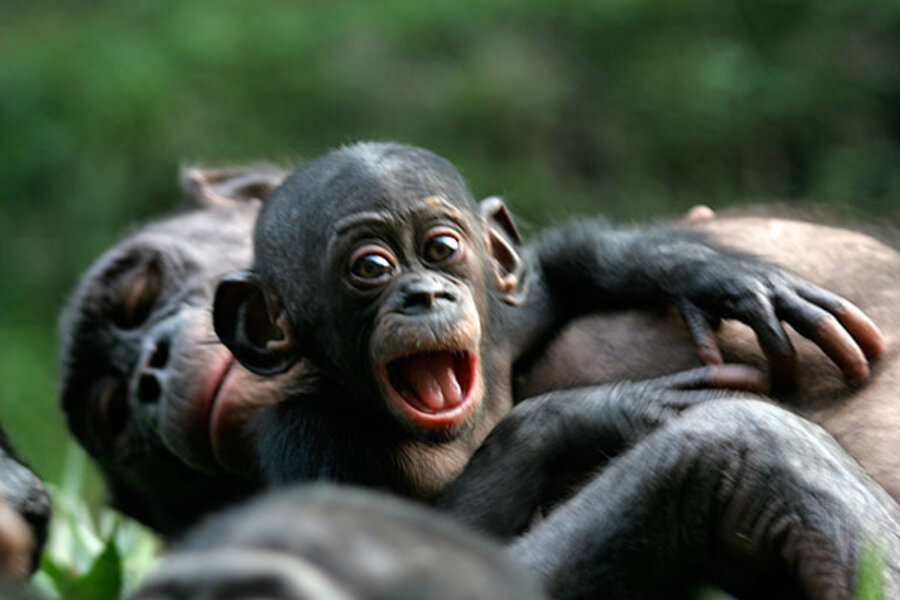The bonobo, the non-murderous version of the chimpanzee, gets its genome mapped
Loading...
| Washington
Behold the bonobo, our ape cousin that's kinder and gentler than the chimp or, well, us. Now scientists have mapped the primate's DNA, and some researchers say that may eventually reveal secrets about how the darker side of our nature evolved.
Scientists have found that we are as close genetically to the peace-loving but little-known bonobo as we are to the more violent and better understood chimpanzee. It's as if they are siblings and we are cousins, related to them both equally, sharing some traits with just bonobos and other characteristics with just chimps.
Bonobos and humans share 98.7 percent of the same genetic blueprint, the same percentage shared with chimps, according to a study released Wednesday by the journal Nature. The two apes are much more closely related to each other — sharing 99.6 percent of their genomes — said study lead author Kay Prufer, a geneticist at the Max Planck Institute in Germany. "Humans are a little like a mosaic of bonobo and chimpanzee genomes."
Bonobos and chimps have distinctly different behaviors that can be seen in humans, with bonobos displaying what might be thought of as our better angels, said Duke University researcher Brian Hare. Bonobos make love, not war. Chimps have been documented to kill and make war. Bonobos share food with total strangers, but chimps do not. Bonobos stay close to their mothers — who even pick out their sons' mates — long after infancy like humans. But chimps tend to use tools better and have bigger brains, like humans.
"Is the bonobo genome the secret to the biology of peace?" asked Hare, who was not involved in the new research. "They have done something in their evolution that even humans can't do. They don't have the dark side we do.
"If we only studied chimps, we'd get a skewed view of human evolution," he said.
Bonobos, chimps and humans shared a single common ancestor from about 6 million years ago, Prufer said. Chimps and bonobos shared the same common ancestor until about a million years ago, when the Congo River formed. Then the bonobos developed on one side of the river, the chimps the other. They became different species, even though scientists didn't realize that until about 90 years ago.
Bonobo heads are slightly smaller and their teeth are arranged differently. In behavior, bonobos are far more tolerant, more social. They are inordinately sexual. Instead of releasing tension by fighting, they couple repeatedly, Hare said. Bonobos are ruled by alpha females, chimps by males.
In some ways — especially when looking at the physiology of the brain — it's as if a bonobo is a juvenile chimp that doesn't develop, Hare said. Chimps get more violent as they age; bonobos don't.
While the scientific name for bonobos is Pan paniscus, "they should be Peter Pan," Hare said. "They never grow up and we have lots of data to support this idea. Much of their psychology seems to be frozen."
Some researchers say Hare has romanticized the bonobo too much. Emory University researcher Bill Hopkins says he has more bonobo scars than chimp scars on his body. Sure, bonobos will bite, but they won't kill, Hare said.
Bonobos are endangered and only live around the war-torn Democratic Republic of Congo. "Ironically," Hare said, "bonobos are from the place where people are at their worst."
___





